![]()
By Toni L. Kamins
The Netherlands is widely considered one of Israel’s closest allies, but at the same time continues to take a critical stance towards Israel consistent with EU’s pro-Palestinian policies. This article is about the shameful history of Dutch Christian anti-Jewish sentiment. Read together with “A Very Brief History of European Christian Anti-Jewish Sentiment.”
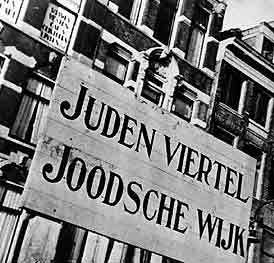
Ghetto sign reading “Jewish quarter” (German) and “Jewish neighborhood” (Dutch) in Amsterdam during WWII. (source: jewishvirtuallibrary.org)
The first Jews came to what is now the Netherlands around the 11th century, relatively late compared to the rest of Europe. As was the case everywhere else, anti-Jewish laws and sentiment based on the teachings of the Catholic Church, and later Protestantism, were a fact of life. Contemporary documents mention disputationes — Church-sanctioned debates that were meant to disabuse Jews of their beliefs and convert them to Catholicism.
The overwhelming death toll caused by the Black Death in the mid-14th century struck fear throughout the Netherlands. In order to present a plausible explanation for the alarming number of deaths, the Church accused the Jews of causing and spreading the plague by poisoning wells and streams. General suspicion of Jews, along with a complete lack of medical knowledge meant that none would challenge the explanation. It became just one of many myths in the anti-Jewish lexicon along with murdering Christian children to use as Passover offerings and desecrating the communion host. Many Jews were murdered as a result, and they were subjected to abuse and insults on the street.
The mass expulsion from Spain in the 15th century at the hands of the Inquisition was devastating to the Jewish community. Centuries of a Judeo-Spanish culture that produced great literature, music, philosophy, liturgy and scientific discovery were ruthlessly cut short. Jews who lived in the Southern Netherlands began to move to the north away from Spanish rule. This included so-called Marranos, Spanish and Portuguese Jews who were forced by the Inquisition to convert to Catholicism, but who continued to practice Judaism in secret. Many used Christian pseudonyms to avoid recognition. By the 17th century large numbers of these Marranos who left the south joined an existing Marrano community in Amsterdam. But as Amsterdam did not have religious freedom, none dared make their Judaism known for fear of arrest. Not so in Haarlem and Rotterdam where Jews were allowed a high degree of freedom including the right to build a synagogue, establish a cemetery and print Hebrew books. Yes despite this Amsterdam was the destination of choice for most Jews, secret or not. And when the Netherlands were divided Jews took refuge in the north, especially Amsterdam.
It wasn’t only Jews who were attracted to the independent Dutch republic. Economic prosperity, along with a relatively tolerant outlook made it popular for other groups outside the Christian mainstream, including French Huguenots and non-conformist scholars.
Despite a somewhat tolerant attitude toward outsiders Jews had no official legal status in the late 16th and early 17th centuries, the result of the innate suspicion with which they were viewed by Christian authorities. But this varied from place to place. A 1619-resolution permitted the towns of Holland and West Friesland to implement individual Jewish policies, so where Jews lived defined their ability to participate in commerce and political and social life. In Amsterdam, although there were no restrictions on Jewish settlement, most trades were closed to them and they could not become burghers. In other towns Jews enjoyed more rights.
When it came to the law, Jews were subject to the same rules as everyone else, but because they could not swear to Christian oaths special wording was created. Unlike Jewish oaths in other countries, these did not contain offensive or demeaning content. And oddly enough when Jews travelled abroad the Dutch Republic insisted that they be recognized as full Dutch citizens.
Jewish life remained in this legal and economic limbo until 1795, but despite all the restrictions, including exclusion from the guilds, the Jewish community grew in economic importance.
The Batavian Revolution of 1795 inspired a more open-minded and tolerant society, relatively free of the stranglehold that religion placed on daily life. The Emancipation Decree of 1796, the result of petitioning by the civic group Felix Libertate (Gelukkig dankzij de vrijheid), granted civil rights to Dutch Jews and removed restrictions on settlement, voting, holding office, and guild membership. Jews were soon elected to parliament and to the municipal councils of Amsterdam, the Hague, and Rotterdam.
Nationalist movements held sway throughout 19th-century Europe, and so did pseudo-scientific theories about race. It was within this milieu that modern anti-Semitism developed. But where other countries in Europe saw savage and overt waves of Jew-hatred, the Netherlands was largely exempt. However religious anti-Judaism, entrenched in Christian theology and philosophy, did make its way into literature and right-wing Protestant politics as was the case with the Anti-Revolutionary Party in the late 19th century. Though Jews were not legally excluded from holding office or position of influence, the reluctance on the part of many Dutch to accept Jews fully meant that there were no Jews in national or other key positions until 1940.
By the first decades of the 20th century Jews in the Netherlands saw themselves as Dutchmen. But that changed when Hitler’s rise to power in Germany established the Netherlands as an important transit point for fleeing Jewish refugees. Unfortunately this influx of foreign Jews accentuated the differences between Jews and non-Jews from the point of view of the non-Jewish citizenry.
The number of refugees was so large that it resulted in the establishment of the Comité voor Bijzondere Joodsche Belangen in 1933 to see to their needs. By the time Germany invaded Holland in May 1940 nearly 16,000 of the 34,000 German-Jewish refugees were still there and trapped.
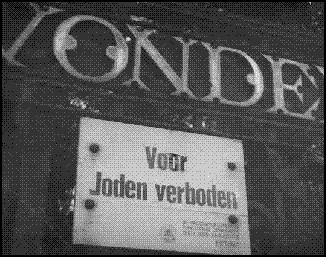
Sign at the entrance of Amsterdam's Vondel Park reading "Forbidden for Jews" (in Dutch) during WWII.
There is widespread belief that the Dutch helped the Jews during the war. The amount of actual help is greatly exaggerated, but it is not without foundation. It is true that thousands of Jews were hidden by non-Jews, and it is true that religious groups attempted to protest anti-Jewish measures and deportations. But the sad fact is that the effectiveness and discipline of the Dutch bureaucracy made it fairly easy for the Germans to carry out their nefarious mission. In addition studies have shown a high degree of collaboration on the part of the police, especially in Amsterdam.
At the end of the war 74% of the 140,000 full Jews (by the German definition) in the Netherlands had been murdered — the highest death toll in terms of percentage in Western Europe, including Germany. Most half and quarter Jews survived. These figures have been the subject of considerable research to find out why they were so high.
The utter devastation of the war resulted in serious problems for the Dutch Jews who did survive. Former resistance fighters, now in positions of power wanted their speedy integration back into society. Not a bad idea on its face, but consider the fact that survivors had lost their immediate and extended families, their homes and possessions, and the larger Jewish community.
And there was the question of Jewish children hidden with non-Jewish families and whose parents and extended families were now dead. They were not turned over the Jewish community as would have been the case before the war. To add insult to injury, committees of Christians were set up to decide the fate of the Jewish children.
It wasn’t until 2000, after considerable pressure, that the Dutch government, banks and insurance companies finally completed restitution of Jewish-owned buildings and assets.
Today Jews in the Netherlands feel like they’re under attack from many corners — animal rights activists nearly succeeded in getting Parliament to ban kosher ritual slaughter; the Royal Dutch Medical Association has called for an end to circumcision; Jews have become targets of violence by Muslims; and Israel is routinely attacked in the political arena. It is a difficult time to be a Jew, but history shows us that has always been the case.
Toni L. Kamins is a writer and editor in New York. She is the author of the Complete Jewish Guide to France, the Complete Jewish Guide to Britain and Ireland (St. Martin’s Press) and the forthcoming Complete Jewish Guide to Paris. Her work has appeared in the New York Times, the New York Daily News, Tablet, Bonjour Paris, the Jerusalem Post, the Forward, New York Magazine and other places. Her personal website is at tonikamins.com. For all the exclusive blog entries by Toni L. Kamins, go here.
© CrethiPlethi.com, 2012. This article may be reprinted (in full length) as long as information is provided about its author, date, place of publication, and original URL.
Read this article in Dutch here.



 RSS
RSS

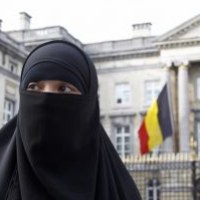
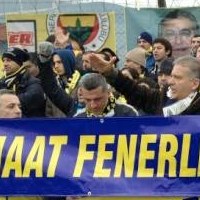

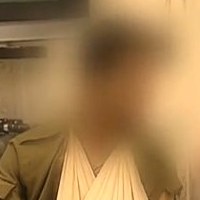










Latest Comments
Hello Mike, Thank you for your positive feedback to the article. I felt there wasn’t too much critical analysis of ...
Thanks for this considered and well constructed article. A follow up article on the manner in which the editorial contro...
THE CLUELESSNESS OF CLAIMING THAT OBAMA'S MIDDLE EAST POLICIES WERE A FAILURE CANNOT BE FURTHER FROM THE TRUTH, WHAT THE...
As long as Obama is the president of the usa do not trust the us government......
Thank you for an good read....